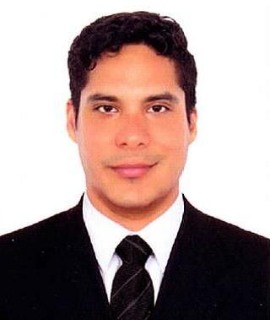Title : Evaluation by simulation of the reactor design to obtain urea from natural gas
Abstract:
Urea is the fertilizer with the highest domestic consumption in agriculture; however, currently Peru is imported mainly from countries such as Russia, China and Algeria. The Peruvian State should promote investment in urea production from methane volumes from proven natural gas reserves from the Camisea fields; In this way, imports would be reversed, generating various benefits for the country: an increase in the Trade Balance, an increase in the economic and commercial development of the area where the plant is installed, and job creation. In the present research work, the design and characterization of the reactor of a urea production plant from natural gas was proposed, comparatively analyzing three commercial processes currently in operation: Stamicarbon, Snamprogetti and Toyo. The ASPEN PLUS software was used as a simulation tool, selecting the SR-POLAR thermodynamic model, which is suitable for the high pressure and temperature conditions of urea synthesis. In addition, the model contains extensions that allow a precise description of the phase and chemical equilibria and other thermodynamic properties; like enthalpy. There are two main reactions that develop in the urea synthesis process; the first reaction, which occurs in the liquid phase, converts ammonia and carbon dioxide into ammonium carbamate, this reaction is very exothermic and fast; chemical equilibrium is easily achieved under reactor operating conditions. The second reaction, which is the decomposition of the ammonium carbamate formed in urea and water, also occurs in the liquid phase and is endothermic, its speed is slow and equilibrium is not normally reached in the reactor. To carry out the simulation and subsequent comparison of the three urea production technologies, we will start from the same feed of ammonia (37,851 Kmol /day) and carbon dioxide (18,989 Kmol /day) for the three cases. For the design of urea synthesis reactors, plug flow reactors of the same size (diameter 2.3 m and length 29 m) were designed, but with different operating conditions and with a different configuration of equipment. The results are graphs that illustrate the variation of the length of the reactor with temperature, the residence time with the variation of the length of the reactor and the variation of the conversion with the residence time for each patent. The results presented are part of the doctoral research project sponsored by the National Fund for Scientific, Technological Development and Technological Innovation (FONDECYT), nowadays PROCIENCIA.
Keywords: urea, natural gas, ammonium carbamate, reactor, petrochemical, process engineering, process simulation, ASPEN PLUS
Audience take-away:
- The audience interested in this investigation will enjoy the following benefits:
- Understanding of the main reactor operating parameters of each urea production patent, for easier handling in process simulation.
- The research may be expanded by the group of researchers who wish to deepen the analysis of any variable of interest.
- The research turns out to be of a practical nature, since it evaluates the comparison of the energy efficiency of the 3 reactors of each urea patent, which can be proposed as a case study at the undergraduate or graduate level.
- Optimize the design precision of a urea production reactor under certain conditions.


